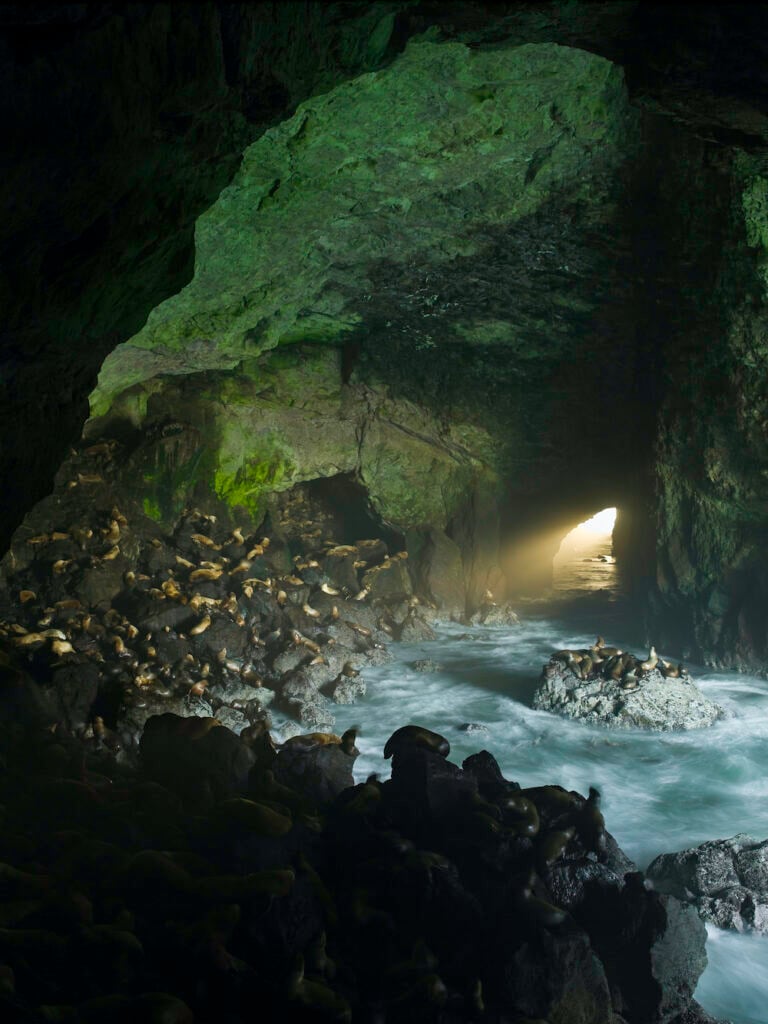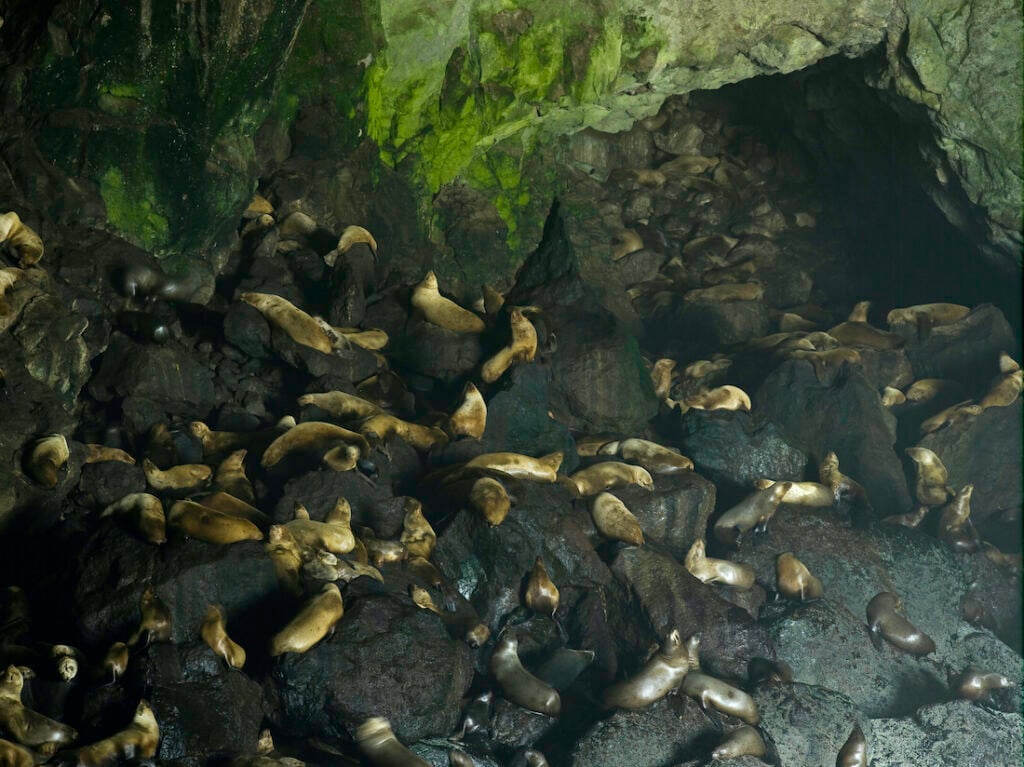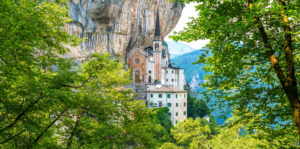As the only known dwelling in the U.S. mainland of the Steller sea lion, the Sea Lion Caves offer visitors a unique look at one of the sea’s rare giants.
It is also the largest sea cave in America, with a floor area of approximately two acres and a roof stretching 125 feet high.

Now found on U.S. Route 101, just north of Florence, Oregon, the space was first forged some 25 million years ago. It has been a wildlife preserve and bird sanctuary since 1932, after being discovered by local seaman, Captain William Cox, in 1880. Organisms living on the towering walls give the cave a beautiful, shimmering emeral color, especially when the sunlight creeps inside.
While there is no guarantee that visitors will encounter a sea lion when they visit – it is not a zoo – the Steller sea lion lives in the cave year-round. Hundreds are often scattered between the interior and the rookery – large rock ledges in front of the cave. During winter, more stay in the cave, while during the breeding and birthing seasons of spring and summer the rookeries are more popular.

The Steller sea lion, also known as the northern sea lion, is the largest of the eared seal family (Otariid), and smaller only than walruses and elephant seals among all pinnipeds. They were first described in 1741 by Georg Wilhelm Steller, the naturalist and explorer, who gives his name to numerous species native to northeastern Russia and Alaska.
Male Steller sea lions can weigh up to 2,500 lbs (1,120 kg) and measure around 10-11 ft (3-3.4 m). Females weigh up to 770 lbs (350 kg) and can reach 9.5 ft (just under 3.0 m) in length. Carnivores, they eat a wide array of fish, as well as squid and octopus, and mainly hunt at night.
Read More: The giant technicolor squirrels living in the forests of India
A decline in the population of Steller sea lions was first observed in Alaska in the 1970s, though scientists remain unsure what exactly caused it. In the late 1980s, the rate of decline increased dramatically, prompting NOAA (National Ocean and Atmospheric Administration) Fisheries to list the species as threatened.
Populations have risen steadily again over the last three decades, but most of this has occurred further northwest of the Sea Lion Caves. Species along the Oregon, Canadian and southern Alaskan coast are still considered threatened.

The sea lion gives name to the cave, but the nature reserve is home to a vast array of other wildlife. Cormorants, Bald Eagles, Pigeon Guillemots and Tufted Puffins are notable birds in the area, while there is a whale-watching deck from which Grey Whales can regularly be seen. Migrating orcas also pass the entrance to the cave.
Going and visiting Sea Lion Caves is one thing. Jumping in and swimming with them is another. Check out our video below on Galyn Franklin, who has been swimming up close and personal with them since he was a child.





